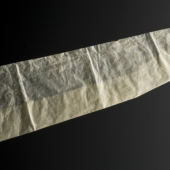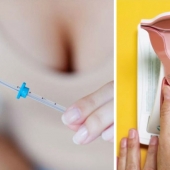Couples who don't want to use artificial means of contraception like hormonal birth control or condoms can manage their fertility by checking for signs they're ovulating. See which natural method may be right for you.
Step 1: Know what natural family planning is
Know what natural family planning is: monitoring your ovulation cycle, and planning sexual intercourse accordingly.
Tip: Track your patterns for at least one menstrual cycle before relying on such a practice for birth control.
Step 2: Consider the mucus method
Consider the cervical mucus method, also known as the Billings ovulation method. You're most fertile when your mucus is clear and slippery, like raw egg white, which lasts about four days. If you don't want to get pregnant, be aware that you can conceive in the three or so days before and after, too, for a total of about 10 potentially fertile days.
Tip: Assessing mucus viscosity can be tricky; a medical professional can help teach you.
Step 3: Take your temperature
Try the basal body temperature method: maintain a graph of your daily temperature, taking it every morning before you get out of bed. When you're ovulating, your temperature may rise slightly -- typically less than 1 degree Fahrenheit -- and stay that way for a few days. Abstain from unprotected sex from the start of your period until five days after your temperature rises.
Tip: For accuracy, take your temperature at the same time every morning, and get at least six hours of uninterrupted sleep. Disturbed sleep affects body temperature.
Step 4: Consider the rhythm method
If you have regular menstrual cycles that last between 26 and 32 days, consider the rhythm method, also known as the calendar method. To practice it, subtract 18 from the total number of days in your shortest cycle, and subtract 11 from the total number of days in your longest cycle. To help prevent pregnancy, forgo unprotected sex on the days within that range, usually from the eighth day after your period begins through the 19th or 20th day.
Tip: Consider using cycle beads -- 33 colored beads that help you keep track of safe and unsafe days.
Step 5: Know the success rates
If preventing pregnancy is your goal, be aware that natural family planning's success rate can vary, especially if not followed perfectly. Effectiveness is between 75 and 88 percent for "typical" practice.
Did You Know?
A University of Chicago sociologist found that among 500 couples who used natural family planning, the divorce rate was less than 1 percent.
- 34 views













